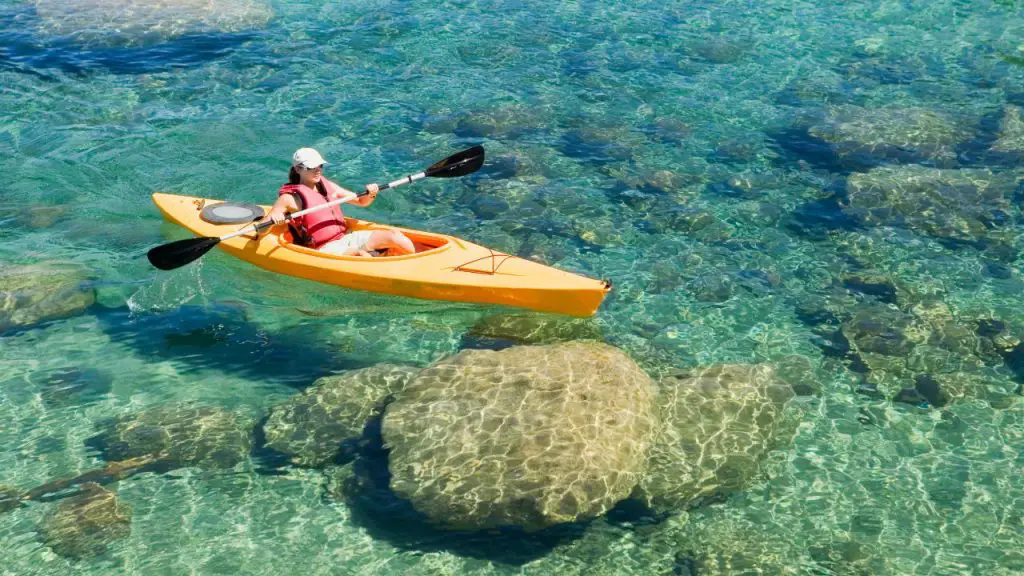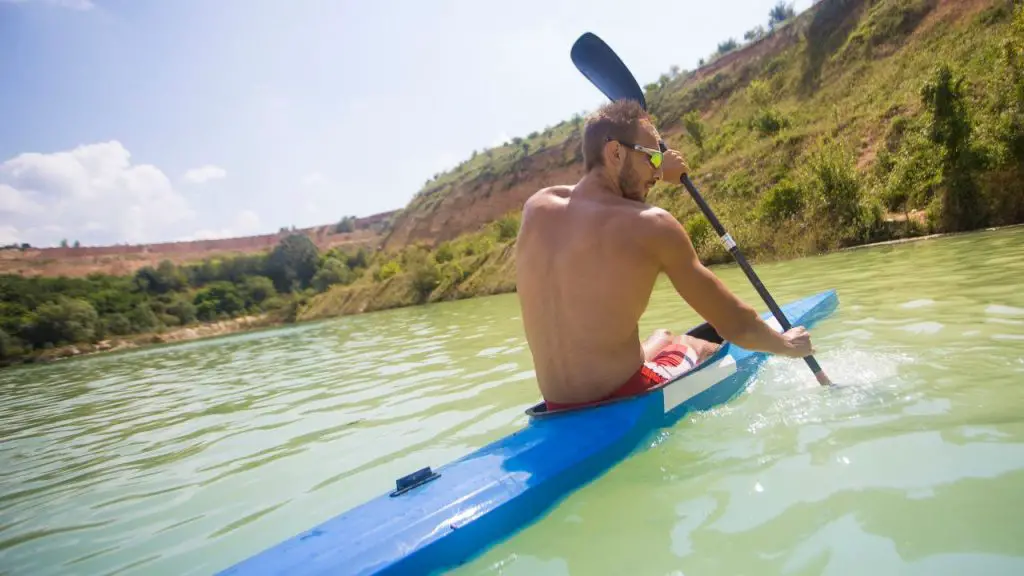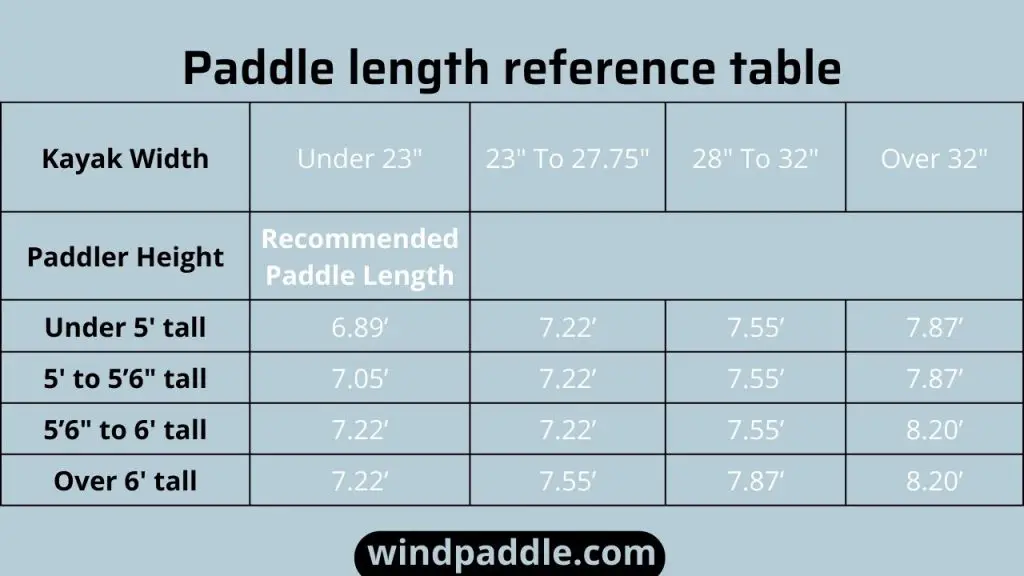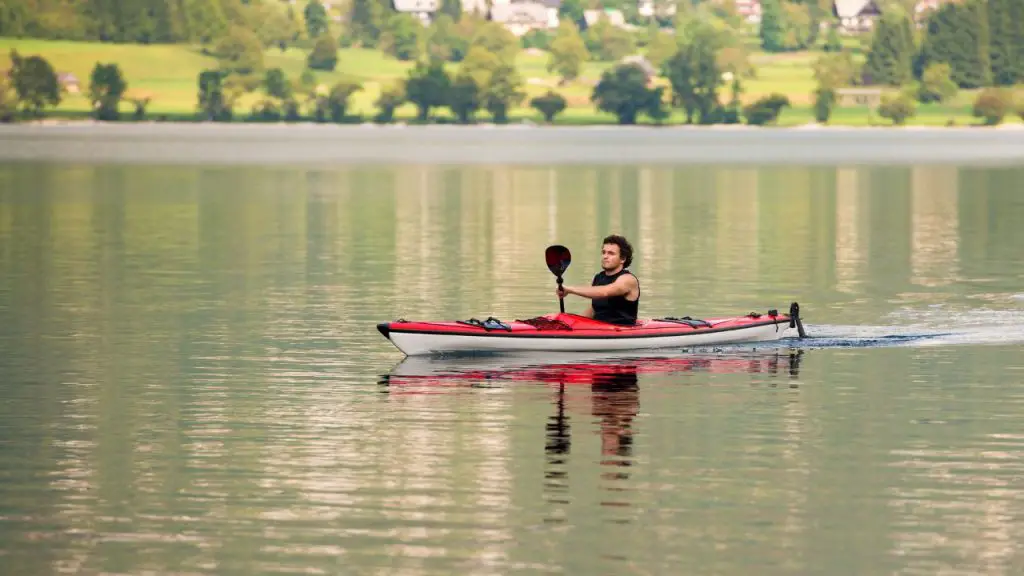Tracking in a kayak means how well it moves in a straight line or stays on its track. This property is influenced by the shape of the hull and many other factors.
If your kayak does not track well, it may be because of design flaws or your paddling technique. Inappropriate body posture and paddle handling can also affect the kayak’s tracking performance. Fortunately, you can correct them as you become more experienced.
Read on to better understand the kayak’s tracking, the factors that affect it, and how to improve it.
Table of Contents
What Does Tracking Mean on a Kayak?

Tracking defines the ability of a kayak to move in a straight line or follow a straight path. It can also be described as the kayak’s tendency to maintain its course while moving in displacement mode.
Some boats track better than others. These are easier to paddle in a straight line. However, more-rocketed kayaks may tend to turn and require paddling experience to maintain them in a straight line.
Do You Need Good Track When Kayaking?
Yes. Good tracking when kayaking helps to maintain your path. Such kayaks stay on their paths even if they face turning forces. They may be the best option for beginners.
But if you are an experienced kayaker, you probably don’t consider this a primary factor. You can keep any kayak on its path with an appropriate paddling technique.
How Do You Know If Your Kayak Tracks Well
As mentioned, kayak tracking is the ability to move in a straight line. It is easy to know if your boat tracks well or not. Just stop paddling and observe how it moves. If the kayak continues to move in a straight line, it has good tracking. Otherwise, its tracking performance is not good.

5 Factors That Affect Tracking
The tracking ability of any kayak is influenced by factors such as the hull design, rudder, and paddling technique. Since kayaks come in different designs, you can expect their tracking performances to also vary.
The same applies to paddling. Kayakers use different methods, and their level of experience also differs. Let’s explore these and other factors in detail.
Kayak Design
The design of your kayak is the primary factor that influences its tracking. The length and width of the boat determine its maneuverability as well.
Long and narrow kayaks track better. They can move in a straight line and are excellent at resisting turning forces. However, such kayaks are not as maneuverable as shorter ones. Kayaks with relatively short hulls turn effortlessly and are perfect for complex maneuvers such as carving and skidding.

Rudder or a Skeg
A rudder is a blade attached to the stern of a kayak commonly used as a pivot for enhancing the boat’s maneuverability. It is controlled by a foot pedal in the cockpit, making it easier to turn the kayak to the desired side.
Since rudders can pivot a kayak from side to side, they can also improve its tracking performance. They can help you hold a course if you don’t apply the force to turn the boat. With proper paddling technique and body posture, rudders can allow you to paddle through crosswinds or water currents.
Your Paddle
The first factor to consider when buying a paddle is its shaft length. That is determined by the height and width of the boat. A wider boat requires a longer paddle and vice versa. You also need a long paddle if you are tall.
So, choosing the correct paddle length is crucial if you want to sail your kayak in a straight line. Use the table below as a reference when deciding on the paddle length.

Apart from the paddle length, also consider the blade shape. It also affects how your kayak tracks. Choose paddles with an asymmetrical blade and a dihedral shape if you want a better tracking performance.
Asymmetrical paddles have a rib down the center, which improves water flow over the blades. Water flows smoothly over them, making it possible to track straight. Other paddle blades without this mid-rib flutter more.
Lastly, the paddle’s shaft also affects the kayak’s tracking performance. Consider feathered ones because they reduce the effects of crosswind when paddling. That allows you to track well.
SeaSense Xtreme 2 Kayak Paddle, 84
State of the Kayak
Your kayak may be deformed over time. Dents on the hull distort the overall shape, which in turn, affects the tracking performance. New kayaks without those dents are streamlined, making them track better than old or damaged ones.
In general, use an undamaged kayak with its hull still intact. It tracks better than an old, damaged one.
Level of Experience
Lastly, your paddling skills play a vital role in the tracking performance of your kayak. Your posture and paddling technique determine whether or not the boat tacks in a straight line.
Incorrect posture means you sit in the kayak while leaning on one side. The extra weight on that side will make your boat tend to sail in that direction. Many beginners experience this problem. But with proper training, you can improve your paddling technique, and your kayak will track better.
How you hold your paddle and apply your energy impacts the kayak’s tracking performance. If your right hand applies more power than your left hand, the kayak will drift toward the left.
You should hold the paddle proportionately and use uniform energy on both arms for every stroke to track straight.
How To Track Kayaking More Accurately
Kayaking in a straight line can be challenging. But the good news is you can improve the tracking performance by doing a few tricks. Some kayakers have installed rudders, bought the right size paddles, and mastered better paddling skills.
Get Right Equipment
Start by buying a long and narrow kayak for better tracking. But if you already have your boat, you can install a rudder or skeg to allow you to sail straight against crosswinds and water currents.
Also, consider using an appropriate paddle. And by that, we mean matching the paddle length with your height and the kayak’s width.
Consider an asymmetrical, feathered paddle with the right blade shape. The dihedral-shaped blades with mid-rib are the best choice for better tracking.
Borogo 8″ Surfboard Fin – Kayak Skeg Tracking Fin
Improve Your Paddling Skill
Your weight when paddling also affects the kayak tracking performance. Try to lean towards the direction you are turning away from or edge your boat to reduce the waterline length. The golden rule is to ensure the boat’s hull is one-third on its side of the water.
For instance, lean to the right and paddle on that side if your kayak drifts to the left.

How you apply the strokes also has a significant impact on how your kayak tracks. Learn and practice different strokes to know what suits different situations. Most kayakers use a sweep and rudder strokes to enhance tracking performance.
Sweep strokes are the favorite among paddlers and are often used to keep the kayak on its track. Use sweep strokes in the opposite direction of where your boat is drifting to if you want to bring it back to its path. For example, strike on the right side if it moves towards the left.
Rudder strokes also help to keep your kayak on track, but this is only possible for vessels fitted with rudders.
You require skills and a lot of practice to master using a rudder to steer a kayak straight. That is why you should keep practicing to improve your paddling skills.
FAQs
Is a longer kayak track better?
Yes. A longer kayak can effectively resist crosswind and other turning forces, allowing you to maintain sailing on a straight path. However, these kayaks are not as easily maneuverable as shorter ones.
How does a kayak track distance?
Popular distance-tracking methods in a kayak are GPS trackers, speedometers, and water compasses. You need one or two of these devices for your kayaking adventure to help you know your location and avoid getting lost in the vast waters.
Does the Apple Watch track kayaking?
Yes. Apple watches with GPS support standalone recordings without connection to your smartphone. You can use them to record outdoor activities such as kayaking, hiking, jogging, skiing, etc. However, they are not waterproof.
Can a Fitbit track kayaking?
Yes. Fitbit has a SUP App, which tracks your stand-up paddling sessions on the water. It can show you the heart rate, distance paddled, current speed, total strokes, average speed, the maximum speed attained, and paddling duration. It has a wealth of information.
Some Thought
Buying a new kayak or equipment to paddle in a straight line may be out of reach for many people. Besides, it is not the best approach to improve your tracking performance.
Instead, improve your paddling technique by practicing different strokes. It will make you maintain your path, regardless of the kayak design and type.
Thank you for staying with us at Windpaddle to the end. We appreciate your time and believe we answered your questions and addressed your concerns. Kindly share this article with fellow paddlers to keep them informed and help us grow our audience.



